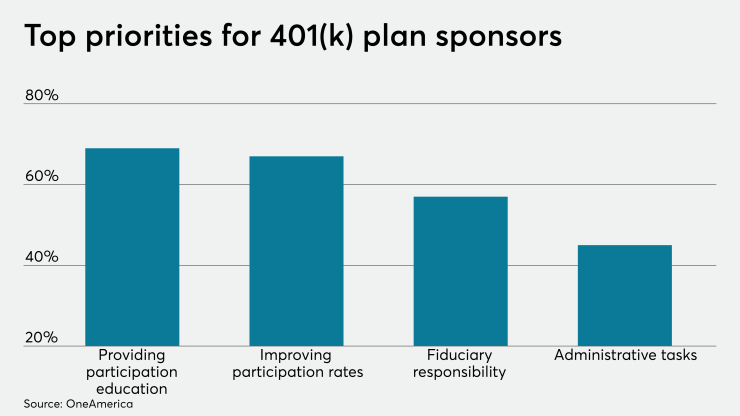The need to review and revamp retirement plans has never been greater, given the recent increase in litigation directly addressing retirement plan oversight. According to a study by the Center for Retirement Research at Boston College, the number of complaints related to 401(k) plans is back on the rise after a significant decline from 2009 through 2013.
An annual assessment can ensure fiduciary requirements are met, while helping to reduce future costs, administrative headaches, and ongoing liability. Here are four steps every company HR team should take (and why).
1. Review retirement plan documents
Changes in your business — or changes in the law — may produce unexpected changes in your plan's operation that impact the type of plan you should offer. For example, the IRS has instituted new rules regarding hardships and all plans with hardship provisions need to be amended to comply with these new rules by January 2020.
Make sure to take a fresh look at your plan documents each year. The decisions you made at the onset should still support the best interests of your company and your employees. If not, it is your responsibility to change them. Additionally, make sure you’re informed of any legal changes that may affect the way your plan is being run. Your record keeper and/or adviser should be keeping you informed of such changes, but ultimately, the burden of responsibility lies with you.
Lastly, all participant communications must be aligned with the most up-to-date plan information, so be sure you’re not only conveying any changes, but that the messaging is consistent.
2. Identify and correct plan administration pitfalls
Administrative mistakes are common and the sooner you find them, the easier and less costly they are to fix. The Department of Labor often flags several issues during plan audits, the most common being:
· Failure to timely enroll eligible employees or inadvertently allowing ineligible individuals to participate;
· Use of incorrect or inconsistent definitions of "compensation" when determining deferral amounts or employer contributions;
· Incorrect calculation of participant’s working hours or years of service;
· Failure to provide employees with necessary notices and plan information; and
· Improper administration of plan loan repayments and forfeiture accounts.
If any of these pitfalls sound all-too-familiar, or if you’re concerned you may be opening yourself up to administrative risk, it’s worth working with your adviser and/or record keeper to identify the proper solutions. This could mean outsourcing your 3(16) services or leveraging technology to proactively address things like eligibility calculations, notices and plan document distribution, loans, and more.
3. Reevaluate fees
It’s important that you’re regularly reviewing your fee disclosures and are clear on how much you and your employees are paying for services. You should never be surprised by fees you’re being charged, nor should the participants in your plan.
It’s generally considered best practice to go to market to compare providers at least every three years to ensure your fees are justified and that your company is on the right plan. Excessive fee allegations are currently at the heart of a number of fiduciary related lawsuits, highlighting the serious effects of ignoring this important responsibility. Taking a regular pulse of the market to ensure your fees are defensible (not necessarily the lowest, but the best plan at the best price), can help protect you against those claims.
4. Hold a plan committee meeting
This is also an ideal time for your committee to regroup to confirm that it has satisfied its fiduciary responsibilities. If you don’t have a committee, now is a good time to assign this responsibility to ensure proper oversight.
The committee should review all service provider agreements and fees, the plan’s investment lineup, and make sure all service providers have copies of operative plan documents.
Taking these important steps can ensure your retirement plan offering is not only healthy, but also operating in the best interests of your company and its participants. After all, this benefit plays a very important role in the lives of employees across the country, with more than 75% of individuals identifying their 401(k) plan as their sole source of retirement savings.
Making sure your company’s retirement plan is running smoothly is the best way to support employees on their retirement saving journey.






